
Pinhole storm is a rare and dangerous phenomenon (Illustration photo).
Storm No. 5, internationally named Kajiki, is making landfall in central Vietnam.
Dr. Nguyen Ngoc Huy, commonly known to the online community by the nickname “Huy weather” – who has more than half a million followers on his personal page, recently made some notable comments related to this storm, including mentioning the “eye of the needle storm”.
This concept is rarely mentioned in daily life but is one of the most dangerous types of storms according to meteorologists. So what is a needle eye storm, and why is it considered a warning sign of super storms?
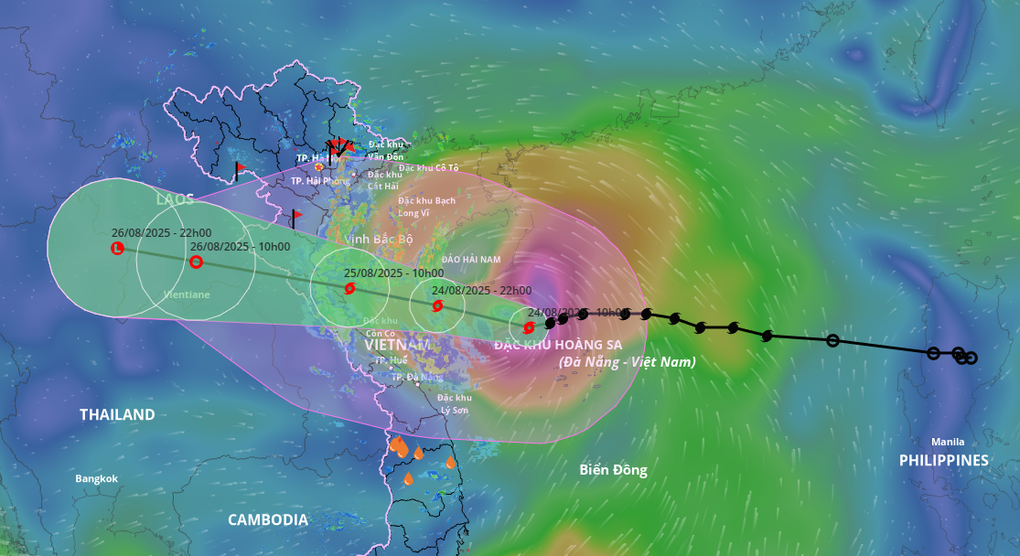
Predicted path of storm Kajiki (Photo: Vietnam Disaster Monitoring System).
What is a pinhole storm?
Among extreme weather phenomena, tropical storms are always haunted by fierce winds, heavy rains and giant waves. However, among the types of storms, meteorologists are particularly interested in a rare structure but often associated with unpredictable destruction: pinhole eye hurricanes.
This is a phenomenon in which the eye of a storm (the calm central region surrounded by the eyewall) has a structure that shrinks to an extremely small size, looking like a “pinhole” when observed from a satellite.
Typically, the eye of a hurricane ranges from 32 to 64 km in diameter. However, in a pinhole storm, this size decreases to less than 16 km. On satellite images, the eye of the storm is almost a small dot amid dense, swirling clouds.
This narrowing is not just a formality, but also signals a special physical mechanism: the storm is rotating faster and tends to strengthen.
Why is the eye of a storm smaller and the storm stronger?
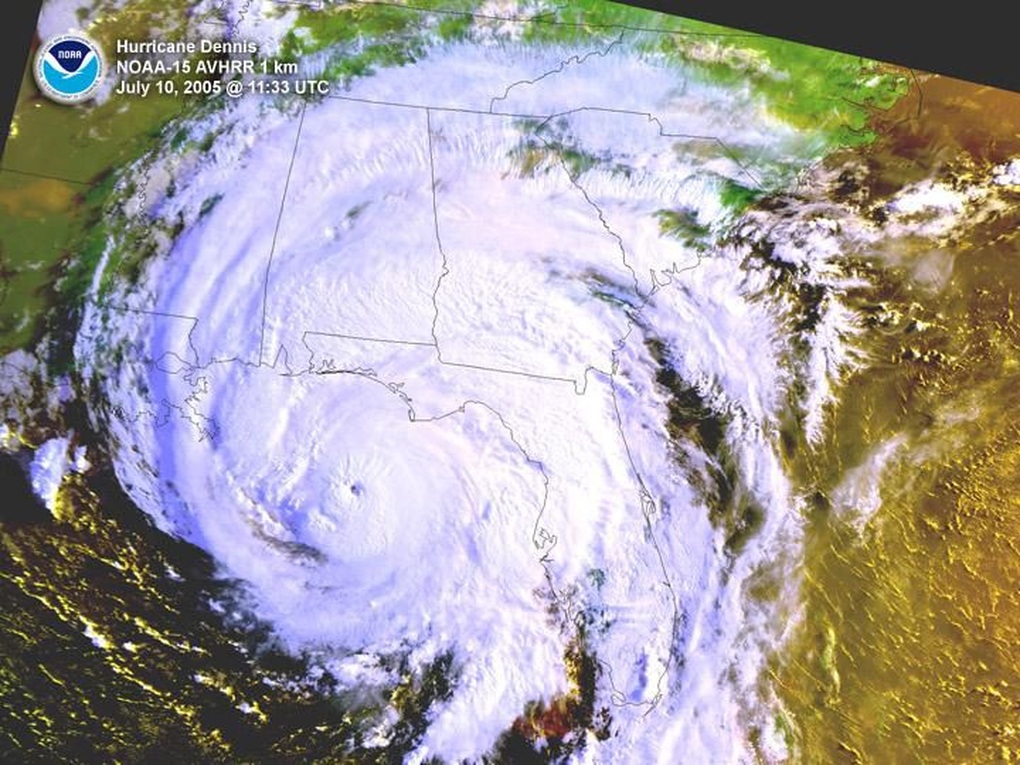
The eye of Hurricane Dennis is only about 8 km wide (Photo: NOAA).
Meteorologists often liken this phenomenon to a dancer spinning: as the arms are pulled together, the rotation speed increases. With hurricanes, the same principle is called conservation of angular momentum.
As the eye narrows, the air swirling around the center of the storm must move faster, causing winds at the eyewall to increase dramatically. This explains why pinhole storms often quickly reach super typhoon strength.
One troubling feature of pinhole storms is their ability to suddenly intensify or weaken. Their small size makes them more sensitive to environmental changes, from sea surface temperatures to surrounding atmospheric currents.
This makes forecasting challenging, especially in providing early warnings to coastal areas. Many seemingly stable storms have suddenly intensified within hours of the eye appearing.
Meteorological history has recorded several shocking cases of eye-shaped storms. Among them, Hurricane Wilma (2005) in the Atlantic Ocean had an eye of only 5 km wide – the smallest ever observed in the region, and also the storm with a record low pressure of 882 hPa.
In the Pacific , super typhoon Haiyan (2013) swept through the Philippines with winds of more than 300 km/h, also showing that the eye of the storm narrowed extremely before making landfall, leaving behind terrible damage to people and property.
Warning from scientists
Thanks to advances in satellite technology, especially new-generation geostationary observing systems like GOES-19, scientists can monitor the detailed eyewall structure in real time.
This helps to identify the eye of a storm early, and combine it with numerical models to predict the storm’s strengthening trend. However, experts still admit that there are still many gaps in understanding, especially about the internal mechanism that causes the eye of a storm to suddenly narrow.
Research by the University of Colorado and the National Weather Service (NCAR) shows that nearly 60% of storms that develop eyewalls later develop into super typhoons of category 3 or higher.
This suggests that the needle eye is not just a distinctive morphological sign, but also an early indicator of extreme danger. As climate change increases the risk of extreme weather events, understanding and closely monitoring this phenomenon becomes more urgent.
Source: https://dantri.com.vn/khoa-hoc/bao-mat-kim-nguy-hiem-nhu-the-nao-20250824125144159.htm








![[Photo] General Secretary To Lam attends the 80th anniversary of Vietnam's diplomacy](https://vphoto.vietnam.vn/thumb/1200x675/vietnam/resource/IMAGE/2025/8/25/3dc715efdbf74937b6fe8072bac5cb30)






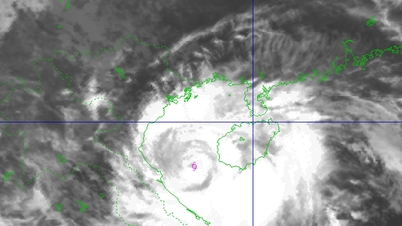
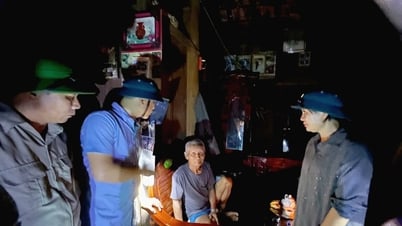





















































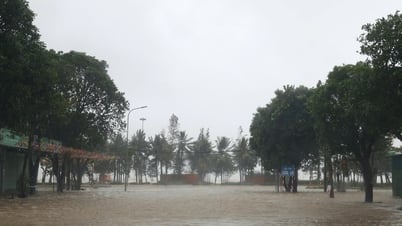





































Comment (0)